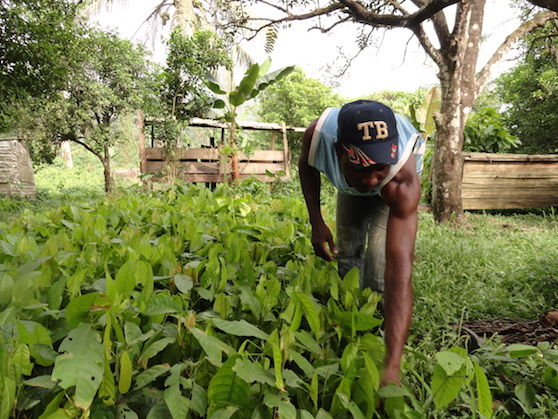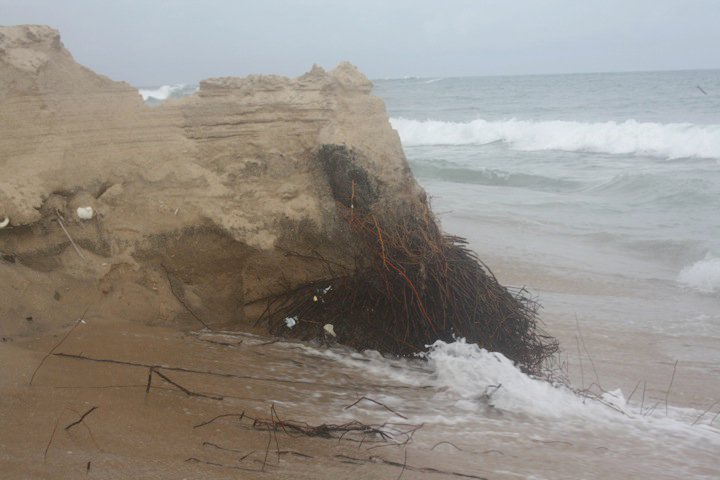According to a 2008, report by Thomson Reuters Foundation 100,000 hectares(ha) of Mali’s fertile land, was handed to Libyan investors in a 50 years renewable lease with no discussion about the impact on impoverished communities, who had farmed this land for generations (over 800years). With the collapse of the Libyan government, it is now uncertain whether this project will continue. This leaves the poor families that lived and farmed this land with an uncertain fate of what the future holds for them. More than half of the country’s 15 million people live below the official poverty line and nearly two million are hungry, says the U.N.’s World Food Programme
This situation is far from coming to an end as many more developed countries continue to show interest in using huge land masses in Africa for activities that will guarantee their economic sustainability.
Land grabbing is the contentious issue of large-scale land acquisitions; the buying or leasing of large pieces of land in developing countries, by domestic and transnational companies, governments, and individuals. The land grabbed is used for commercial farming, industrial production and investment purposes at the expense of the local community. Land grabs contributes to displacement of vulnerable communities and farmer with disregard of the rights of these people. The land is used for large scale commercial activities with little or no attention given to avoid their hazardous environmental impacts.
Why call it Land Grabs?
Research has shown that most of the land given out on long term leases are not empty, they are occupied and in use mostly for small scale farming. It is understood that most of Africa’s food is produced by small scale farmers who supply most of Africa’s food needs. Moreover, about 65% of Africa’s land is communally owned. A good example is Mozambique who’s land law gives communities possession over lands that they have farmed for over 10 years. However ‘Investors’ and governments claim that these collectively held territories are “marginal” or “idle”, the simple reason being because indigenous communities, small-scale farmers, pastoralists, forests, grassland and other critical ecosystems are not producing for the international market.
In a report by Mozambique’s National Farmers Union (UNAC) and GRAIN (Genetic Resources Action International), titled Land Grabbers of the Nacala Corridor; Mozambique Agricultural Corporation (Mozaco) has already evicted 1,500 farmers and without compensation to make way for their operations such as cultivation of soybeans. It is calculated that several thousand more will lose their lands if the company is allowed to expand to 20,000 hectares (ha). Interestingly the land targeted by Mozaco no doubt is situated between two important rivers, the Malema and the Nataleia, where 4,500 families live and farm. These families now risk losing access to their land and the water they need to farm and survive.
One of the reasons advanced to justify why Africa is being targeted for such a practice can be found in one of World Bank’s report of 2009 – Awakening Africa’s Sleeping Giant. A justification states that Africa’s land is empty and available. That much of Africa’s land is under-utilised and ripe for commercialisation. Investors are increasingly grabbing “real” assets from nature to create new derivatives-based commodity markets in order to recoup their losses and spread risk since the 2008 global economic crash.
Three main reasons account for the scramble for land in Africa. These are embodied in the quest by western multinational companies to exploit cheaper raw materials to provide food, fuel and finance for their markets in advanced economies.
The food price spikes of 2007/8 showed just vulnerability of food importing nations in supporting its population. The Fluctuating fuel prices in the period 2007–09, urged companies to acquire land for the production of agro fuel or biofuel crops. The meltdown in international financial markets in late 2009 and subsequent recession caused investors to seek to invest in the more tangible asset of farmland, with the aim of having secure investment considering the rising demand for food and fuel.
Another reason why Africa’s land is being prone to grabbing is because the land is considered as cheap and almost free with governments willingly signing off these lands to buyers at highly insignificant commercial rates; again, with disregard to communities and individuals who own these lands.
Many of these land deals involve renewable leases for periods ranging from twenty-five to ninety-nine years, in return for small payments made to national, provincial or local government authorities. Sometimes once-off compensation for locals is included with promises of jobs. Yet after the land is acquired, enforcement of promises made remain a challenge, especially as investors’ choices about how and how much to invest are framed by factors far outside the control of host governments.
Call to Action
There is need for governments to be called to accountability in all land management deals and to engage in more responsible investments deals and with the right strategy.
According to a 2008, report by Thomson Reuters Foundation 100,000 hectares(ha) of Mali’s fertile land, was handed to Libyan investors in a 50 years renewable lease with no discussion about the impact on impoverished communities, who had farmed this land for generations (over 800years). With the collapse of the Libyan government, it is now uncertain whether this project will continue. This leaves the poor families that lived and farmed this land with an uncertain fate of what the future holds for them. More than half of the country’s 15 million people live below the official poverty line and nearly two million are hungry, says the U.N.’s World Food Programme
This situation is far from coming to an end as many more developed countries continue to show interest in using huge land masses in Africa for activities that will guarantee their economic sustainability.
Land grabbing is the contentious issue of large-scale land acquisitions; the buying or leasing of large pieces of land in developing countries, by domestic and transnational companies, governments, and individuals. The land grabbed is used for commercial farming, industrial production and investment purposes at the expense of the local community. Land grabs contributes to displacement of vulnerable communities and farmer with disregard of the rights of these people. The land is used for large scale commercial activities with little or no attention given to avoid their hazardous environmental impacts.
Why call it Land Grabs?
Research has shown that most of the land given out on long term leases are not empty, they are occupied and in use mostly for small scale farming. It is understood that most of Africa’s food is produced by small scale farmers who supply most of Africa’s food needs. Moreover, about 65% of Africa’s land is communally owned. A good example is Mozambique who’s land law gives communities possession over lands that they have farmed for over 10 years. However ‘Investors’ and governments claim that these collectively held territories are “marginal” or “idle”, the simple reason being because indigenous communities, small-scale farmers, pastoralists, forests, grassland and other critical ecosystems are not producing for the international market.
In a report by Mozambique’s National Farmers Union (UNAC) and GRAIN (Genetic Resources Action International), titled Land Grabbers of the Nacala Corridor; Mozambique Agricultural Corporation (Mozaco) has already evicted 1,500 farmers and without compensation to make way for their operations such as cultivation of soybeans. It is calculated that several thousand more will lose their lands if the company is allowed to expand to 20,000 hectares (ha). Interestingly the land targeted by Mozaco no doubt is situated between two important rivers, the Malema and the Nataleia, where 4,500 families live and farm. These families now risk losing access to their land and the water they need to farm and survive.
One of the reasons advanced to justify why Africa is being targeted for such a practice can be found in one of World Bank’s report of 2009 – Awakening Africa’s Sleeping Giant. A justification states that Africa’s land is empty and available. That much of Africa’s land is under-utilised and ripe for commercialisation. Investors are increasingly grabbing “real” assets from nature to create new derivatives-based commodity markets in order to recoup their losses and spread risk since the 2008 global economic crash.
Three main reasons account for the scramble for land in Africa. These are embodied in the quest by western multinational companies to exploit cheaper raw materials to provide food, fuel and finance for their markets in advanced economies.
The food price spikes of 2007/8 showed just vulnerability of food importing nations in supporting its population. The Fluctuating fuel prices in the period 2007–09, urged companies to acquire land for the production of agro fuel or biofuel crops. The meltdown in international financial markets in late 2009 and subsequent recession caused investors to seek to invest in the more tangible asset of farmland, with the aim of having secure investment considering the rising demand for food and fuel.
Another reason why Africa’s land is being prone to grabbing is because the land is considered as cheap and almost free with governments willingly signing off these lands to buyers at highly insignificant commercial rates; again, with disregard to communities and individuals who own these lands.
Many of these land deals involve renewable leases for periods ranging from twenty-five to ninety-nine years, in return for small payments made to national, provincial or local government authorities. Sometimes once-off compensation for locals is included with promises of jobs. Yet after the land is acquired, enforcement of promises made remain a challenge, especially as investors’ choices about how and how much to invest are framed by factors far outside the control of host governments.
Call to Action
There is need for governments to be called to accountability in all land management deals and to engage in more responsible investments deals and with the right strategy.












